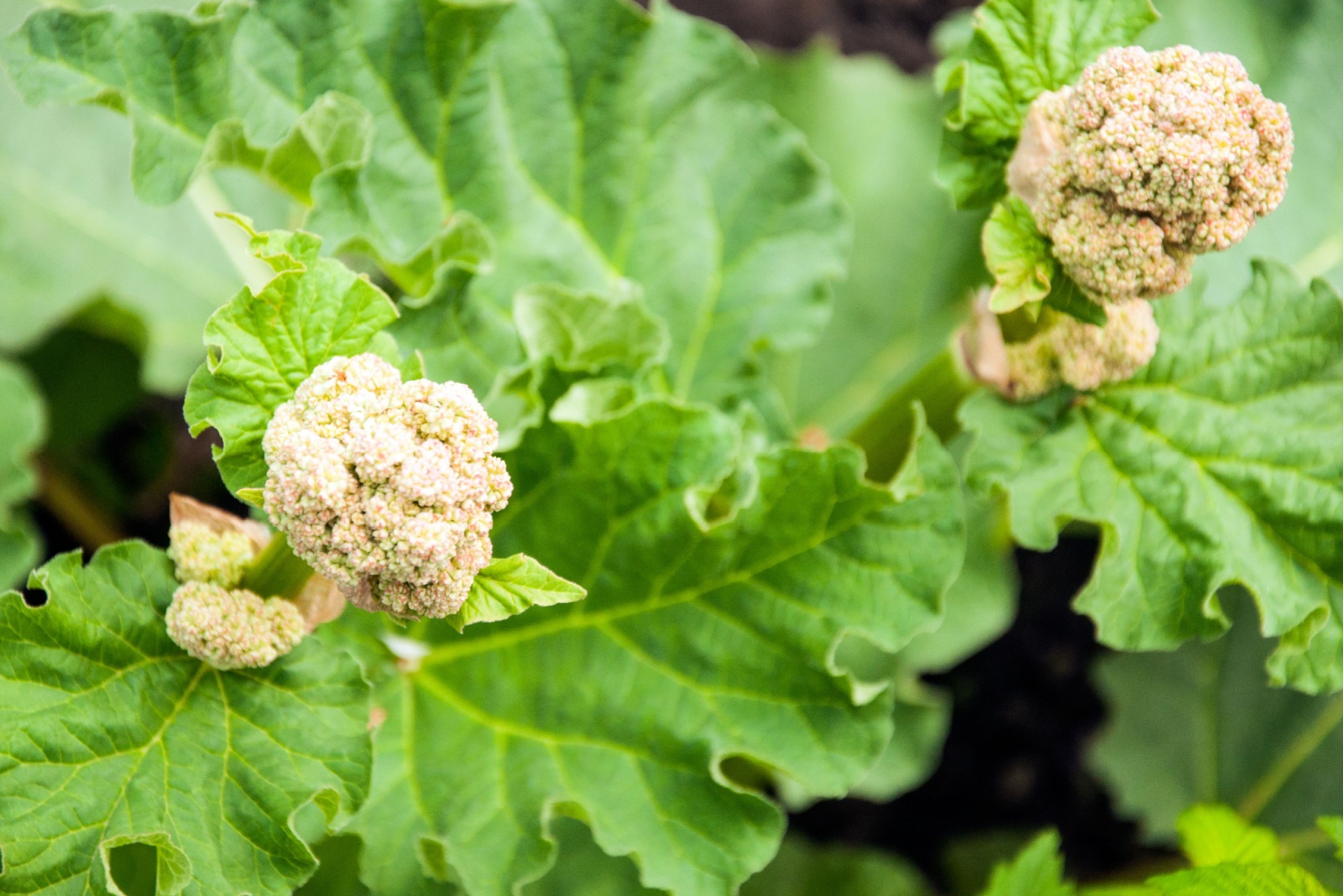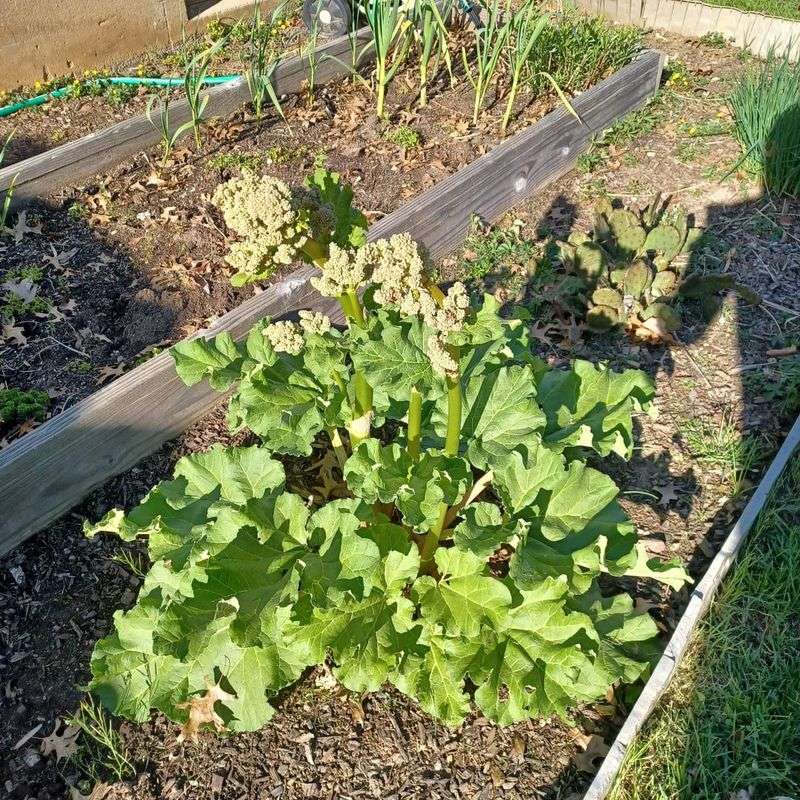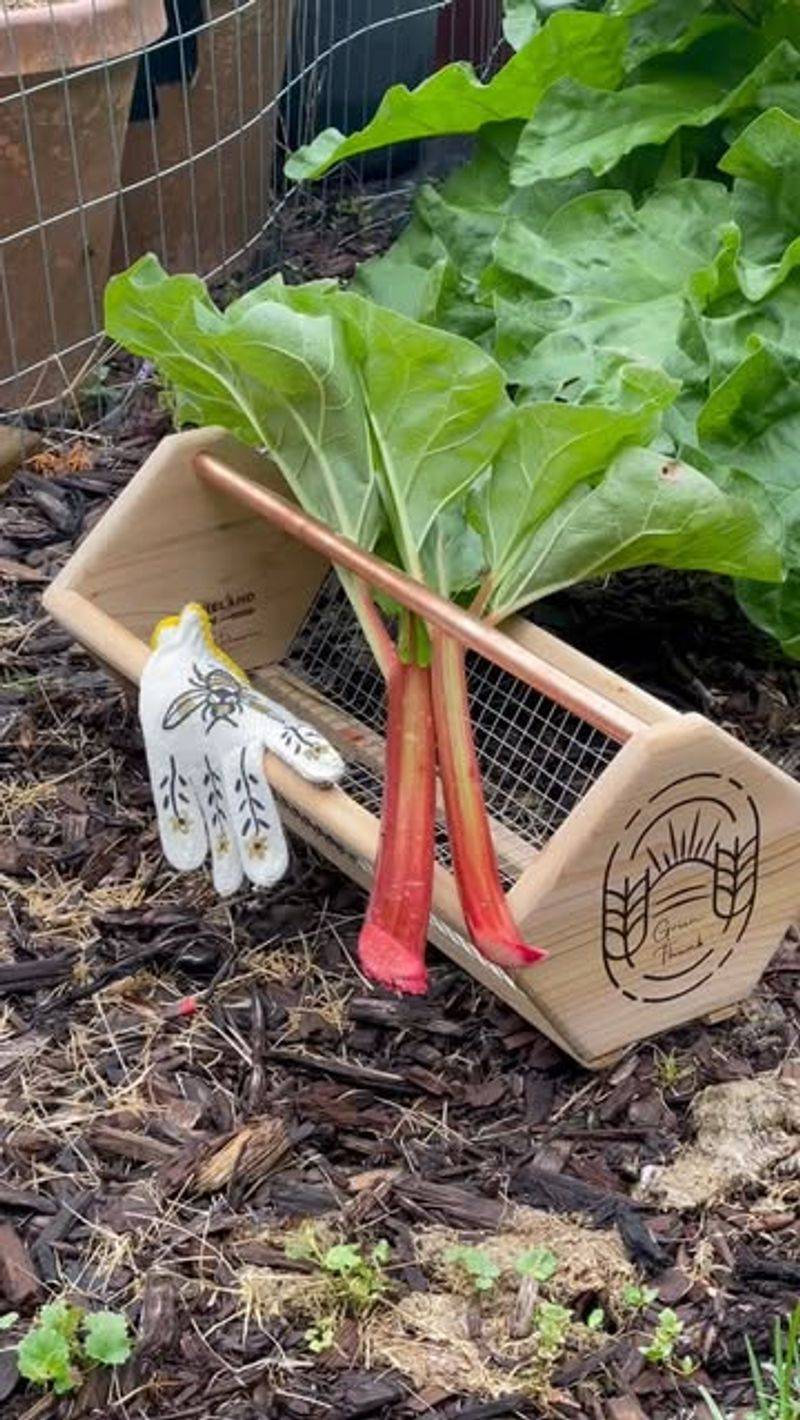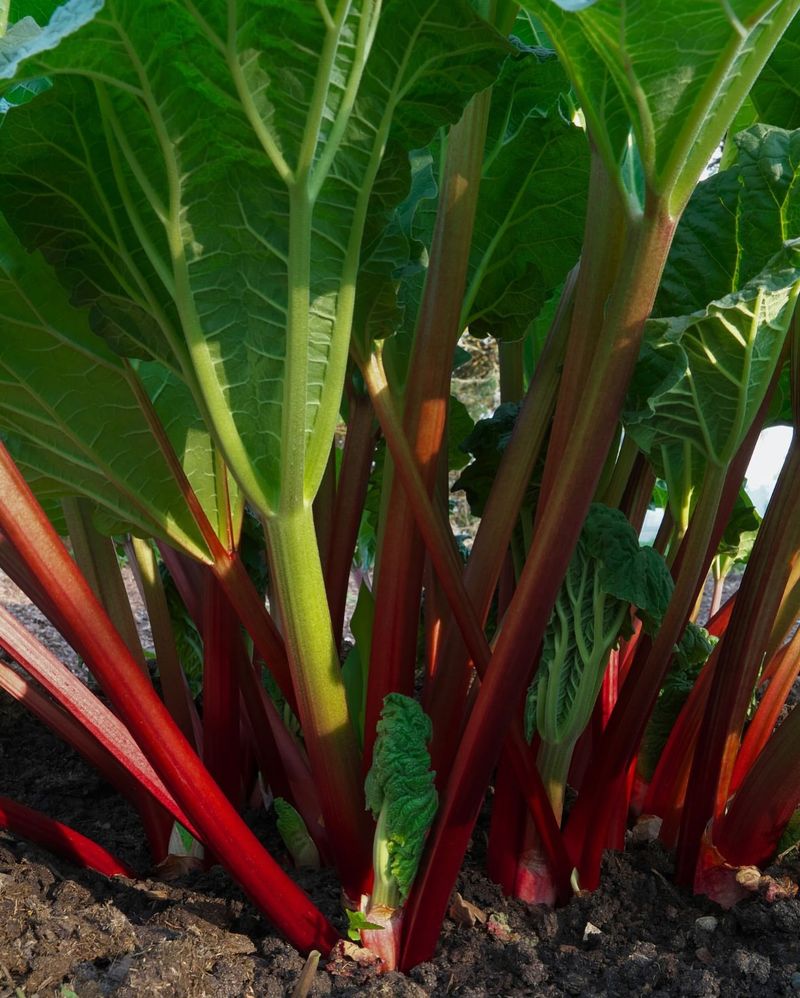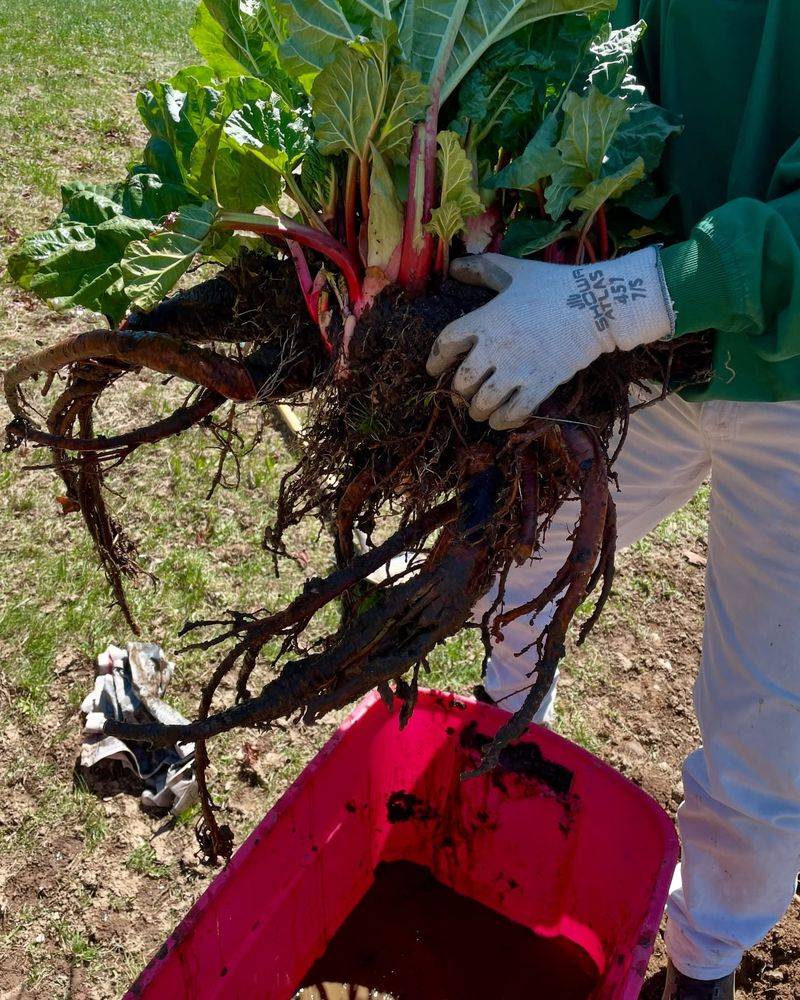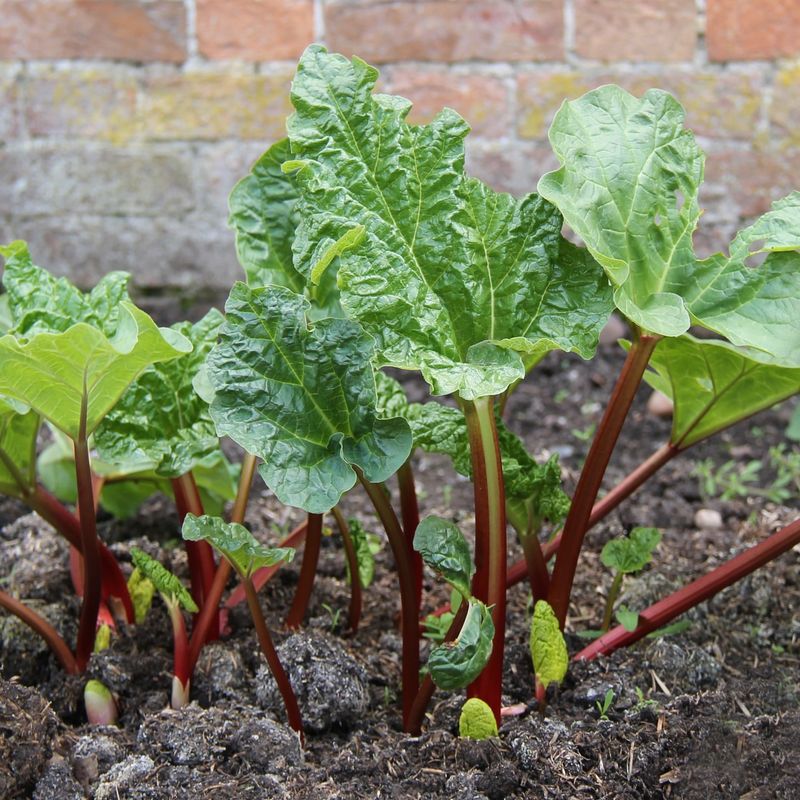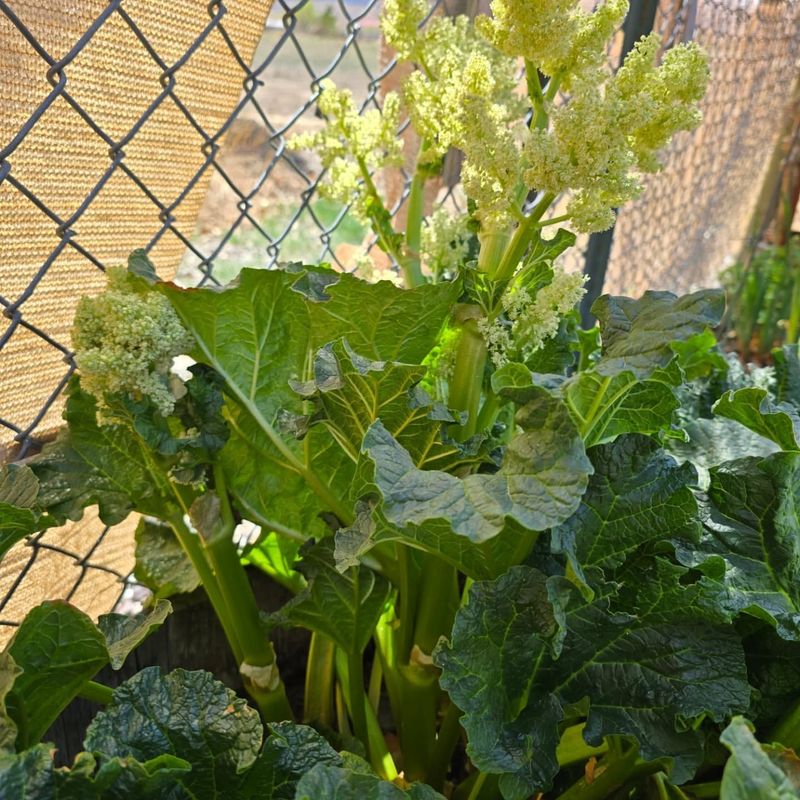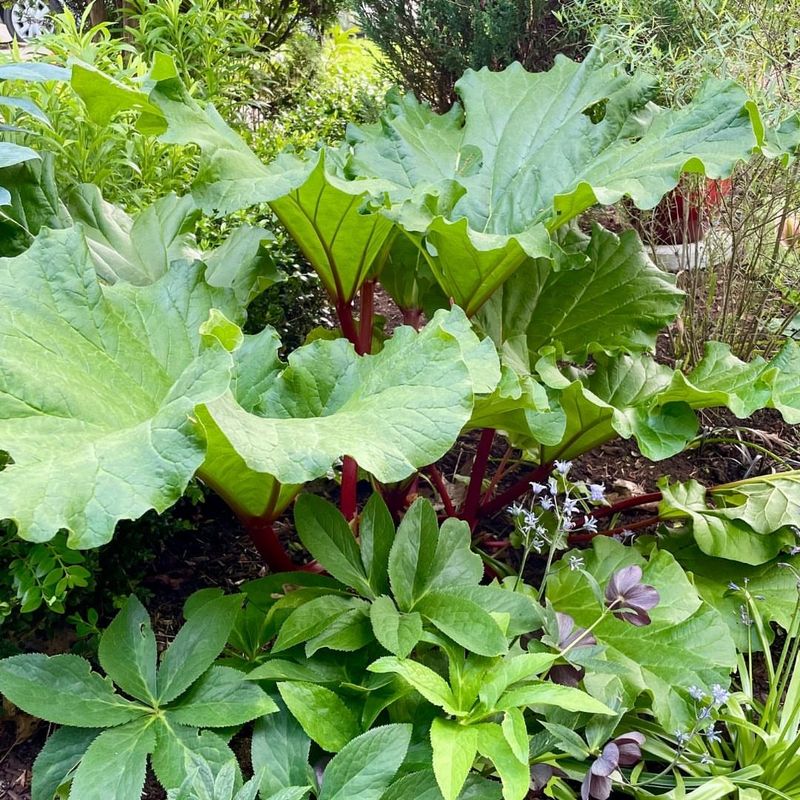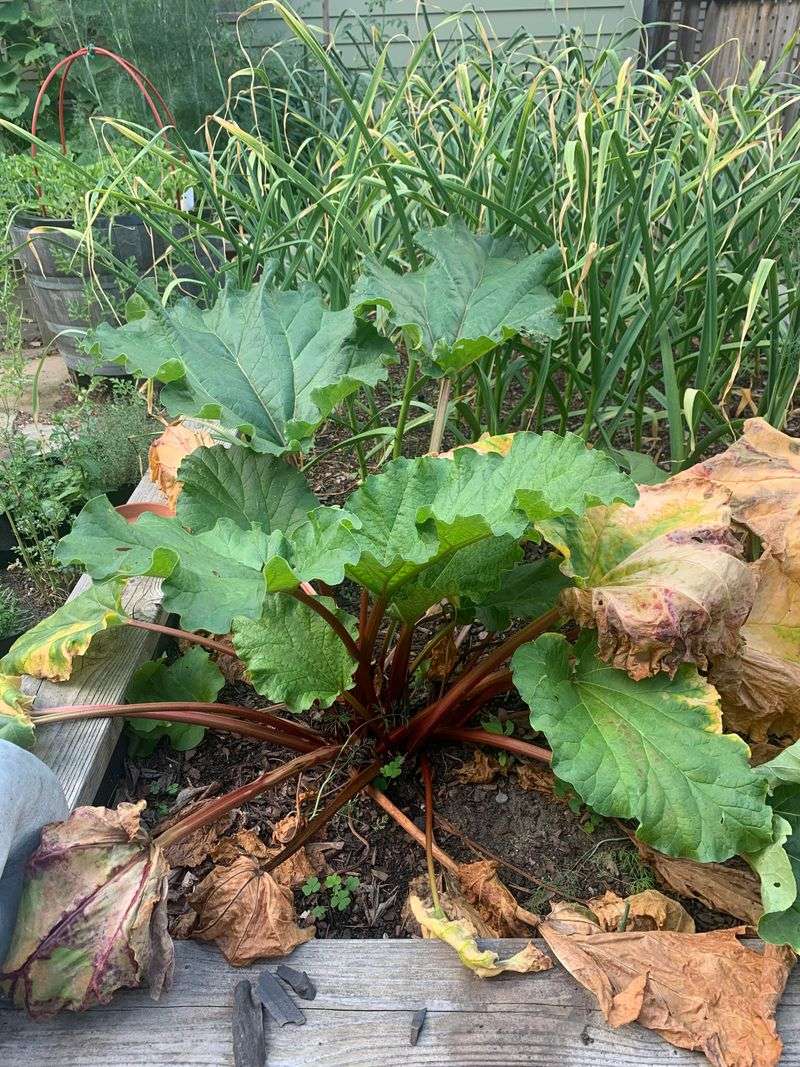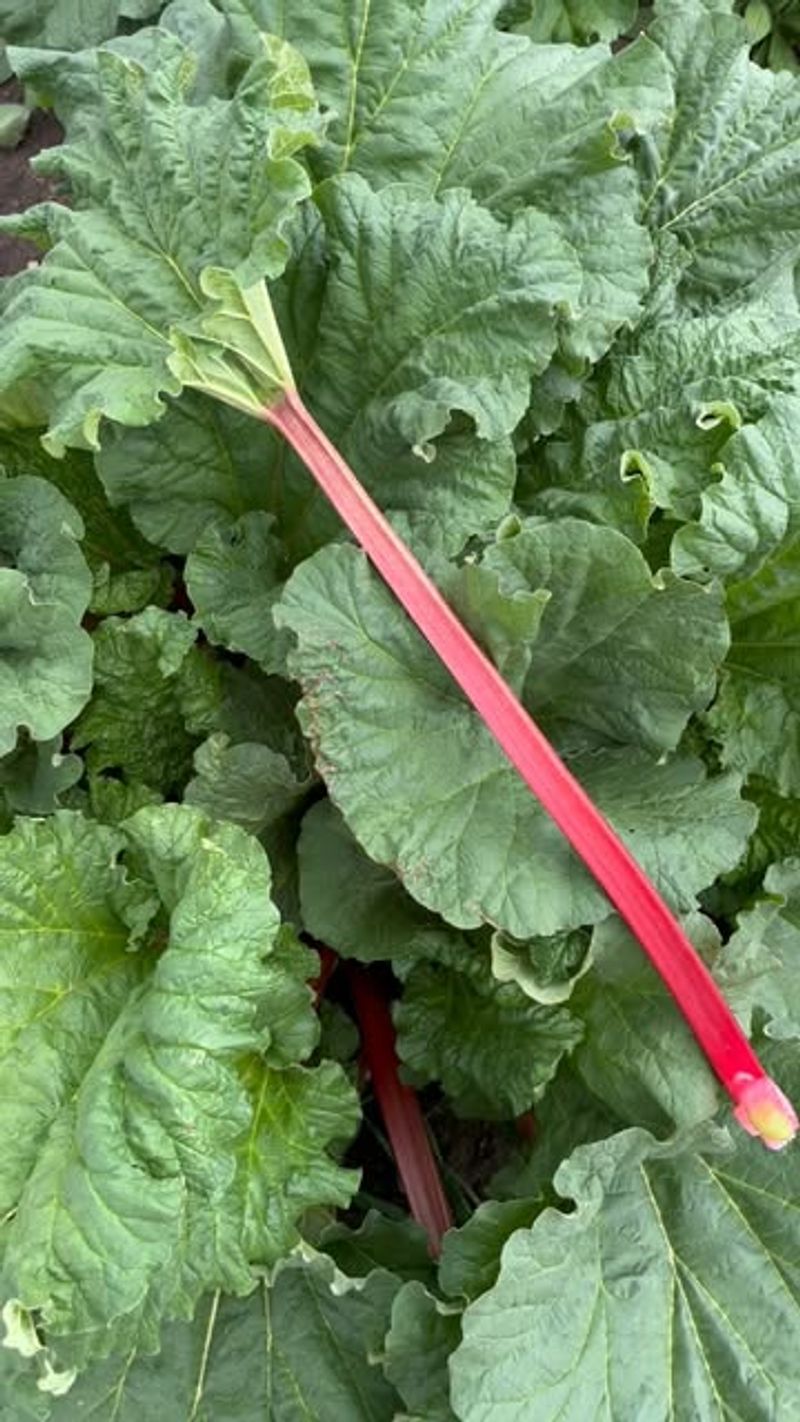Growing rhubarb in Iowa gardens can be rewarding, but those tall flower stalks can cause problems. When rhubarb flowers, it uses energy that should go to making tasty stalks instead.
Stopping these flowers keeps your plants producing the juicy stems we love for pies and jams all season long.
1. Cut Flower Stalks Early
Spotting flower stalks early makes all the difference. These thick, center stalks feel different from regular leaf stems and grow rapidly upward.
Remove them as soon as you notice them forming, cutting at the base where they meet the crown. Your plant will redirect that energy back to producing the tasty stalks you actually want to harvest.
2. Regular Harvesting Helps
Picking rhubarb regularly sends signals to your plant to keep producing more stalks instead of flowers. Iowa’s growing conditions make rhubarb especially vigorous during May and June.
Harvest outer stalks first, pulling them with a gentle twist rather than cutting. This natural harvesting method encourages continued production and reduces flowering tendencies.
3. Proper Fertilization Timing
Fertilizing at the right time prevents excessive flowering. Apply compost or balanced fertilizer in early spring when rhubarb first emerges in your Iowa garden.
Avoid high-nitrogen fertilizers in late spring or summer as they can trigger flowering. A layer of well-rotted manure around plants in fall provides slow-release nutrients that discourage flowering while strengthening roots.
4. Divide Crowded Plants
Older rhubarb plants flower more frequently, especially when crowded. Iowa gardeners should divide plants every 5-7 years to maintain vigor and reduce flowering.
Early spring is perfect for this task – dig up the entire crown, split it into sections with at least one bud each, and replant. The rejuvenated plants will focus on root and leaf growth rather than producing flowers.
5. Water Management Strategies
Stress from inconsistent watering often triggers flowering. Iowa’s variable rainfall patterns mean gardeners must stay vigilant about soil moisture.
Apply 1-2 inches of water weekly during dry periods, especially in late spring. Mulching with straw helps maintain consistent soil moisture and temperature, which keeps plants focused on leaf production instead of flowering.
6. Choose Later-Flowering Varieties
Some rhubarb varieties naturally flower less than others. ‘MacDonald’ and ‘Valentine’ perform exceptionally well in Iowa’s climate and have lower flowering tendencies.
Local nurseries often carry these varieties specifically because they’re suited to our growing conditions. Asking experienced Iowa gardeners about their favorite low-flowering varieties can lead you to the best options for your garden.
7. Shade Management Techniques
Excessive heat can trigger flowering in rhubarb plants. In Iowa’s hot summer months, providing afternoon shade can make a significant difference.
Consider planting on the east side of taller crops or structures. Alternatively, use shade cloth during July and August when temperatures consistently exceed 85°F. This temperature management keeps plants producing stalks rather than sending up flower stalks.
8. First-Year Flower Prevention
Newly planted rhubarb sometimes flowers out of stress. For first-year plants in Iowa gardens, remove all stalks—even the non-flowering ones—for the entire first season.
This sacrifice pays off! Your plant will establish a stronger root system instead of producing above-ground growth. By year two, you’ll have a more vigorous plant that’s less likely to flower and more focused on producing harvestable stalks.
9. Fall Cleanup Matters
Proper fall maintenance reduces next year’s flowering. After the first hard frost in Iowa (usually October), cut back all rhubarb foliage to ground level.
Remove and compost all leaf material to prevent disease carryover. A 3-inch layer of mulch protects crowns during Iowa’s harsh winters while suppressing early spring weeds that compete for nutrients and can trigger stress-induced flowering.
10. Monitor Soil pH Regularly
Rhubarb prefers slightly acidic soil with a pH between 6.0-6.8. Iowa soils sometimes run alkaline, which can stress plants and increase flowering.
Test your soil every 2-3 years and amend as needed with sulfur to lower pH. Adding pine needles or coffee grounds to your compost can naturally acidify soil over time. Balanced pH creates happier plants that focus on leaf production rather than flowering.

